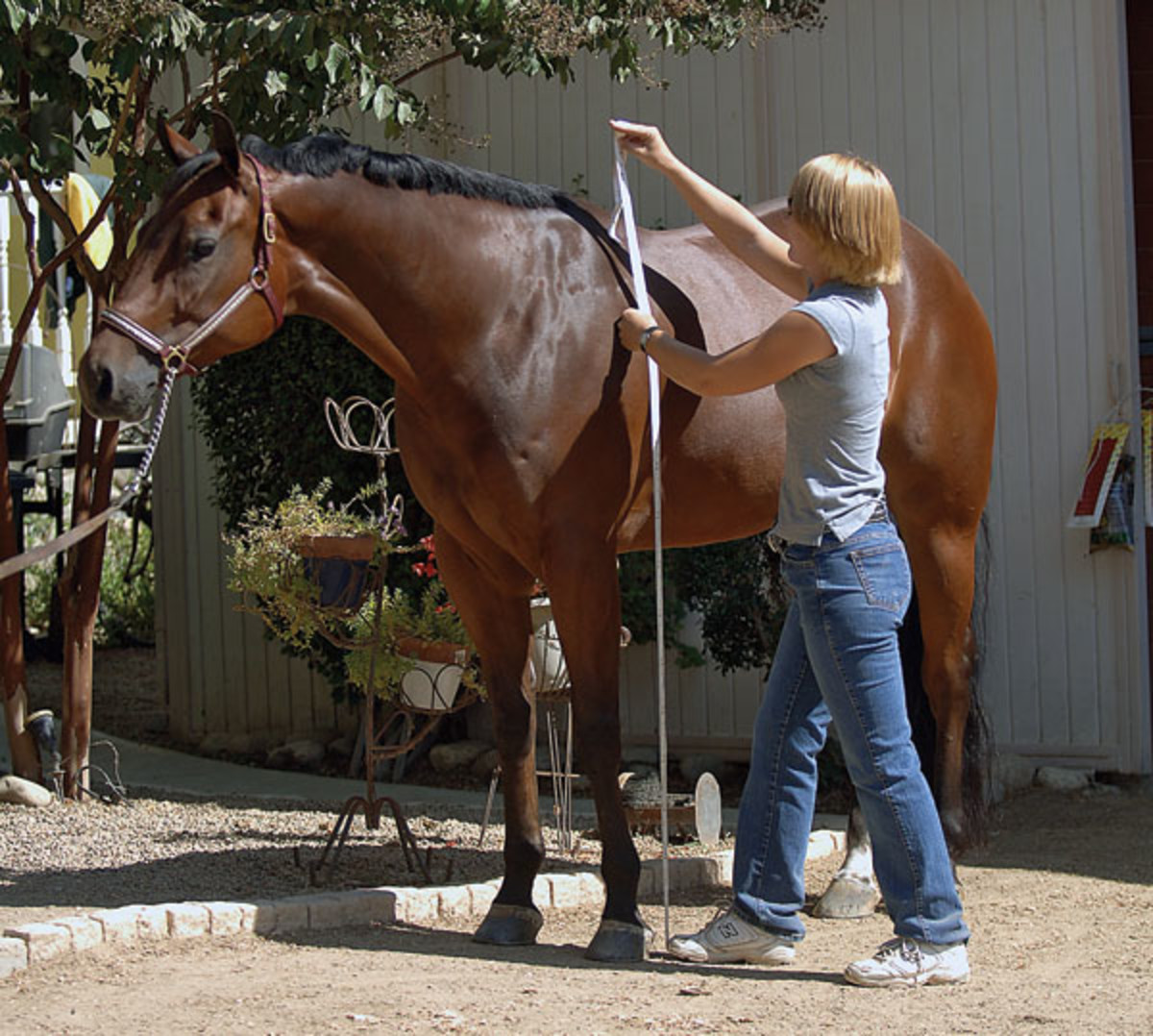
You can’t change how tall your horse is, but it’s still an important thing to know. Here are a few quick tips to get an accurate measure on your horse, and understand how to determine his height.
- Choose the Right Equipment: You will need a measuring stick or a measuring tape specifically designed for measuring horses. The measuring stick should be at least six feet long, and the measuring tape should be at least 10 feet long.
- Prepare the Horse: Before measuring, make sure the horse is standing on a flat, level surface with its head and neck in a natural position.
- Start Measuring: Place the measuring stick or tape at the highest point of the horse’s withers. If you are using a measuring tape, be sure to start at zero and hold the tape taut.
- Get Accurate Results: Have another person hold the measuring stick or tape in place while you step back and check the measurement. Make sure the stick or tape is straight and not tilted. Round the measurement to the nearest inch.
- Record the Results: Write down the horse’s height in inches or hands. One hand equals 4 inches, so if the horse measures 60 inches, it is 15 hands tall.
- Repeat the Process: Take at least two measurements to ensure accuracy. If there is a significant difference between the two measurements, take a third measurement and use the average of the three.
Use the Decimal
What if your horse measures in a number not divisible by four? We’ll use the decimal point after dividing by four, to find their accurate measurement. Think of the 4 inches in a hand as being 4 quarters.
Here’s a simple formula to write your horse’s height correctly:
The first number is the number of hands –> followed by a decimal point –> followed by how many inches (of a hand) are remaining. Often people refer to their horse aloud as “Fourteen two, and write it as 14.2hh (hands high.)
- If your horse measures 60 inches, they are 15 hands tall.
- If they measure 61 inches, that doesn’t mean they are 15.25 hands. Think of that .25 as a quarter of a hand. If a hand is 4 inches, than a quarter of that would be 1. Thus, your horse is 15.1 hands tall.
- If they measure 62 inches, they are not 15.5 hands tall. Again, think of that last decimal as being a fraction of a hand. If you have half of a hand (and a hand is equal to 4 inches), you’d end up with 2. So, your horse is 15.2 hands tall.
- Should your horse be 63 inches, they are not 15.75 hands. The .75 means three quarters. If you have four quarters and want to take 3/4 of them, you will take 3 quarters total. So, your horse would be 15.3.
- A horse that is 64 inches tall, is not 15.4 hands. This is divisible by 4, so therefore he would be 16 hands.
Bonus tip: For the most accurate reading, set a carpenter’s level atop the withers, allowing it to bisect the tape and pinpoint exact height.






